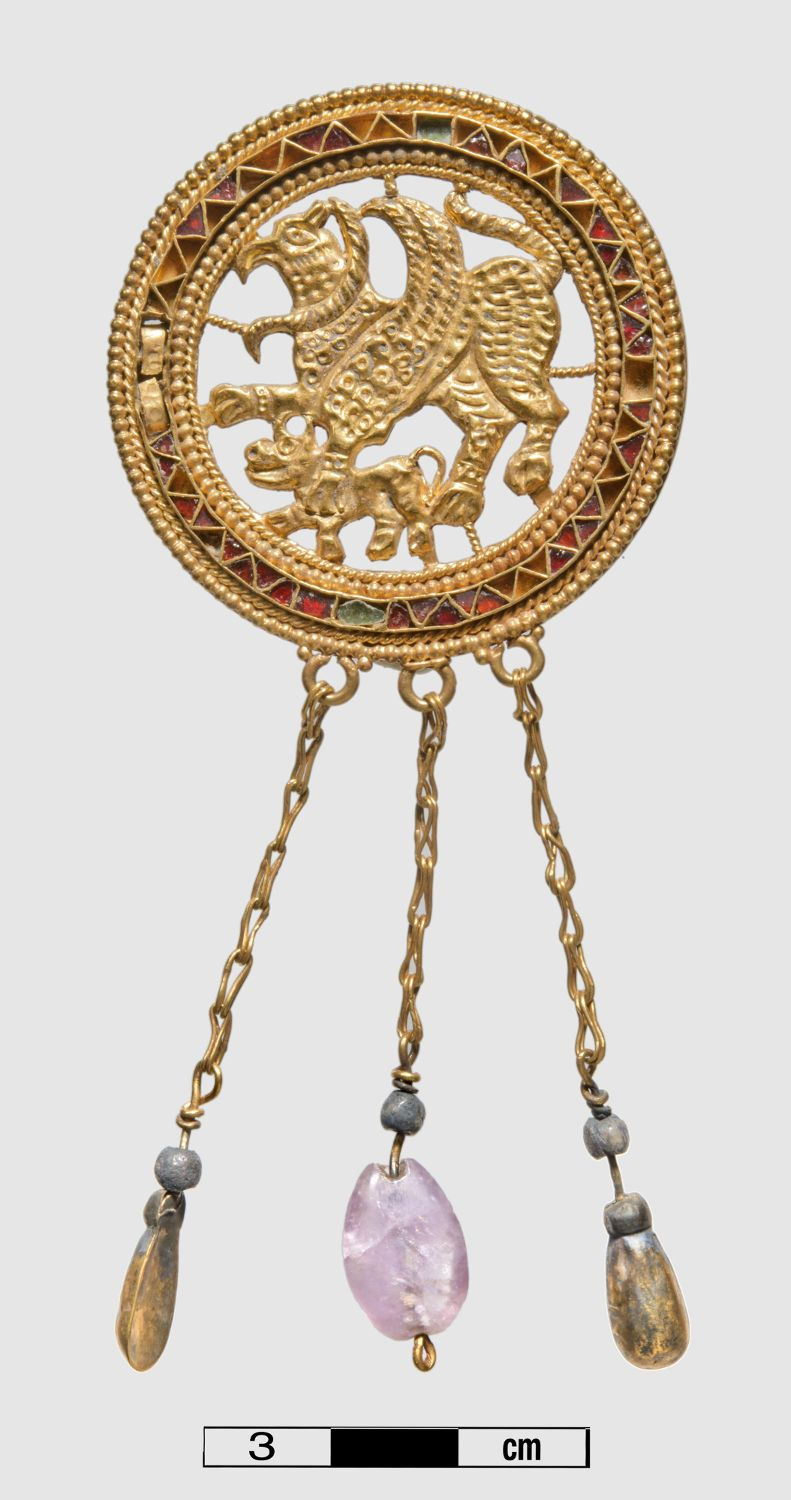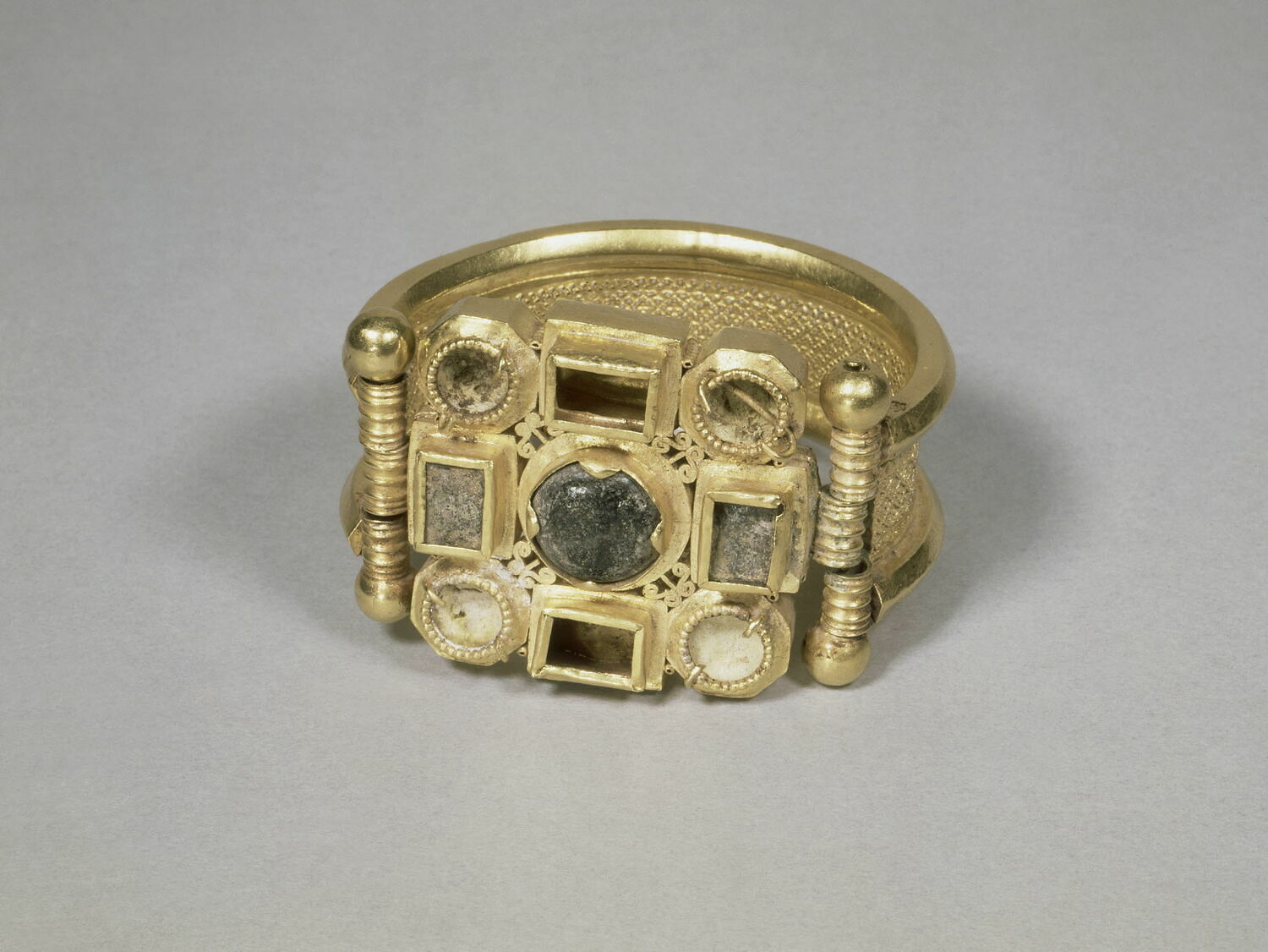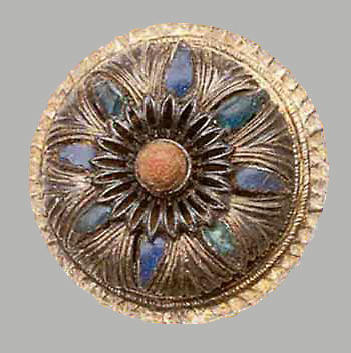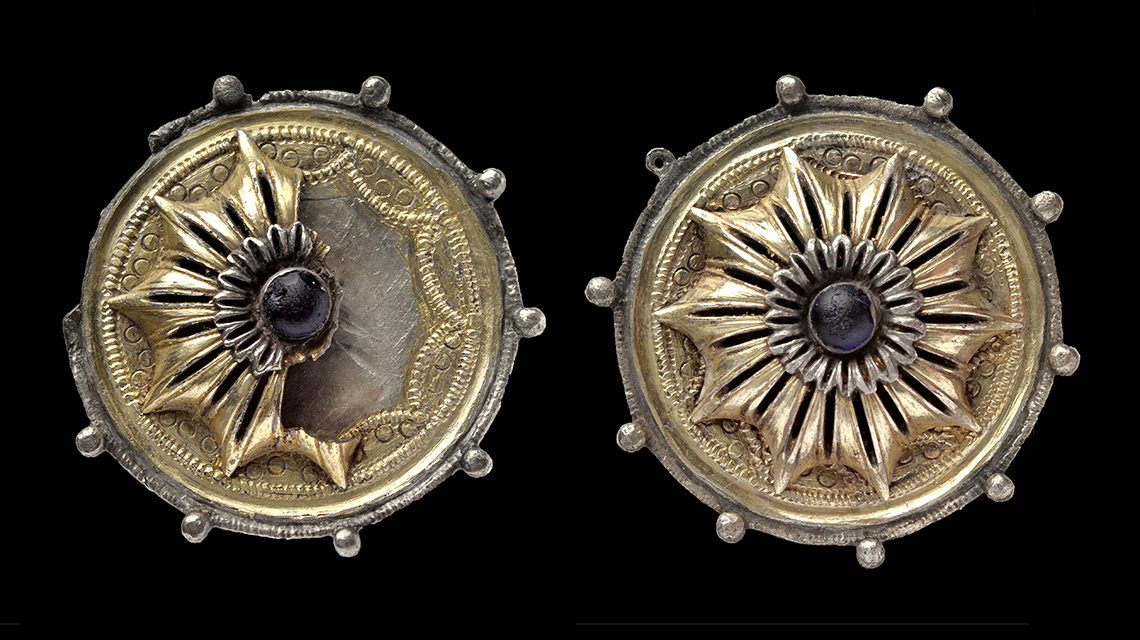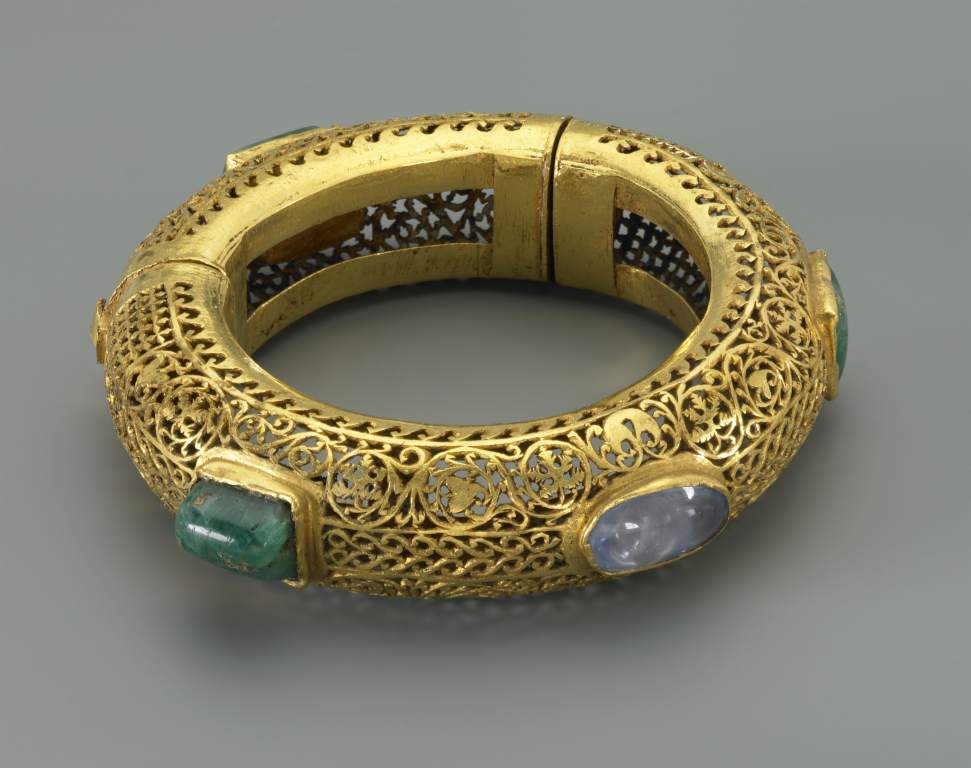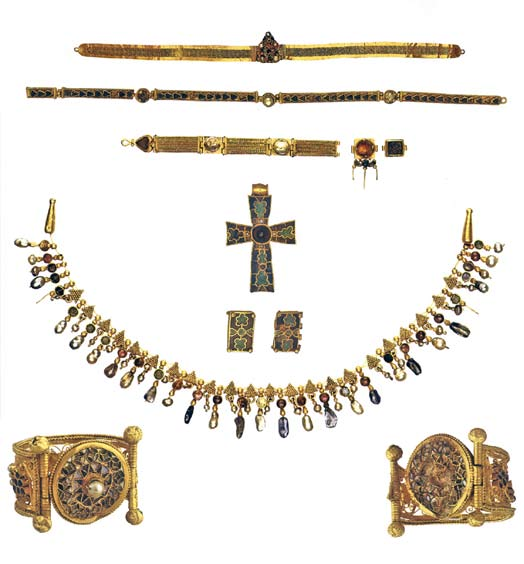
Fibula, Gold, inlaid with onyx, garnet, amethyst, glass paste
Created: 433 – 467 CE
Weight: 160.1 gram
Style: Roman-Late Antiquity (?) Byzantine
Provenance: found in 1852 at Rebrény (near Nagymihály, today Michalovce, Slovakia)
“A round, two-layered onyx (a light-blue layer over a dark one) is at the centre of the almost triangular fibula. It is surrounded by a network of variously sized flat-cut garnets as well as a row of rectangular garnets with a rounded surface. The border on the side is decorated in a spiral pattern: round cells filled with green glass paste are linked by connecting diagonals of gold, the spaces in between filled with garnets. The stones and glass have been added in the cloisonné technique in which the framework is provided by metal strips in the outline of the design. The top and lower edge of the fibula are decorated with precious stones in a cabochon cut (with a convex rounded surface). Between them are green glass inlays and gold granules, the latter attached by soldering. Gold cells set with tear-form garnets hang as pendants on the three chains (pendilia). The centre chain is suspended from a decorative element composed of four garnets and a central amethyst in gold settings. With its three pendilia, it is one of a small group of preserved fibulae that are reminiscent of the splendid specimens found on imperial cloaks in late antiquity and the Byzantine period. Up to now the fibula has been dated to the 2nd half of the 4th century AD. However, some decorative elements suggest the 2nd third of the 5th century. The complicated closure suggests that the fibula was made in a Roman imperial workshop and thus is not, as was previously assumed, a Germanic imitation.”
© Kurt Gschwantler, Alfred Bernhard-Walcher, Manuela Laubenberger, Georg Plattner, Karoline Zhuber-Okrog, Masterpieces in the Collection of Greek and Roman Antiquities. A Brief Guide to the Kunsthistorisches Museum, Vienna 2011


